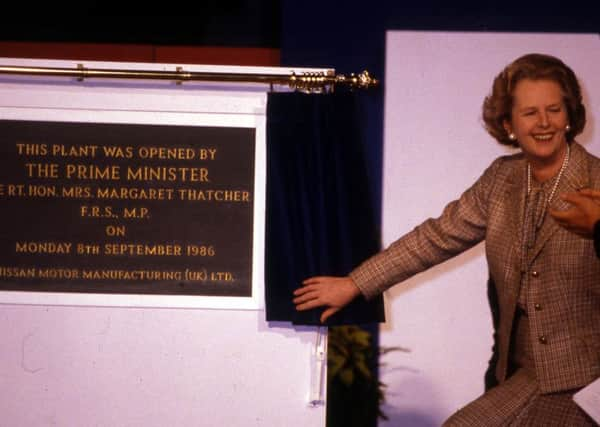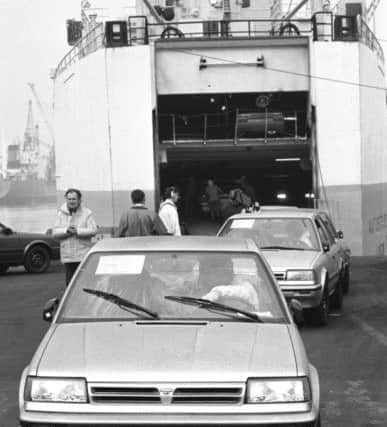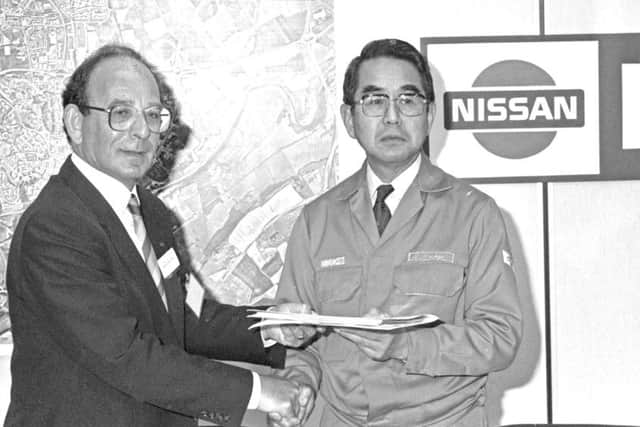Why Nissan has been so good for Sunderland - and why we can't rely on it forever


Sunderland-born economist Paul Swinney, from the thinktank Centre for Cities, looks at what the plant has meant for the city and wider region - and why we can’t rely on it forever.
The Nissan car plant has had a huge impact on the economy of Sunderland and the wider region over the past 30 years.


Advertisement
Hide AdAdvertisement
Hide AdBut while it is right to celebrate the role it has played in the city in the past three decades, Sunderland’s growing reliance on the plant should also be a cause for caution.
No-one would dispute the effect Nissan has had in creating jobs and putting money in the pockets of Wearsiders. The plant itself employs nearly 7,000 people directly, while a further 4,000 people are employed in automotive jobs elsewhere in the city that most likely wouldn’t exist without Nissan.
It is also the most productive car plant in Europe, exporting more cars than the whole of Italy.
Nor is it just the scale of the plant that’s important – the timing of its arrival was also crucial.


Advertisement
Hide AdAdvertisement
Hide AdSunderland was ailing when Nissan first opened the factory gates. Between 1971 and 1991, the city lost 17,500 jobs (a fall of 15%), caused by the decline of the shipyards and mines.
There has been an impressive turnaround since, with Sunderland now home to 30% more jobs than at the start of the 1990s, partly as a result of Nissan. It is hard to imagine where the city would be now if the company hadn’t come and invested when it did.
But a city needs to have more than one engine to power its economy if it is to be prosperous in the years to come.
While the three decades of success that Nissan has had on Wearside should be celebrated, the dominance of the plant – with around one in 10 jobs in Sunderland based in the automotive industry – highlights the lack of success elsewhere in the city, and the on-going challenges it faces.


Here are a few.
Advertisement
Hide AdAdvertisement
Hide AdIn 2015, Sunderland had the 15th lowest average wages out of the UK’s 63 cities. It also had the sixth lowest number of residents holding a degree of all cities, and the lowest share of high-skilled jobs of all cities in England and Wales in 2011 (the latest available data on this measure).
Here’s another.
No business or industry stays in a city forever. The closure of the steel plant down in Teesside may be the most recent illustration of this, but the decline of mining and shipbuilding on the Wear – a mere generation ago – shows what impact having the fortunes of a place hitched on one industry can have if that industry disappears. Hopefully Nissan will stay in Sunderland for many decades to come.


But there is no guarantee of this.
Sunderland has had a great track record of attracting in business investment in recent years, as the success of the Doxford International business park, Hylton Riverside and Nissan itself bear testament to.
But much of this investment has been in lower-paid jobs – the call centres of Doxford being a good example – which has reinforced the low-wage nature of work and lack of career progression that currently characterises Sunderland’s economy.
Advertisement
Hide AdAdvertisement
Hide AdMeanwhile, research by Centre for Cities shows that the higher-paid services jobs that Sunderland lacks are increasingly choosing a city centre base because of the benefits such a location offers.
Sunderland has struggled to attract these businesses precisely because its city centre does not offer the benefits the centres of other more successful cities do.
This has been compounded by decades of policy which has actively encouraged out of town development while ignoring the problems that the city centre faces.


Doxford International, Hylton Riverside, Rainton Bridge and the new enterprise zone around Nissan have all benefited from the public purse in one way or another at a time when the city centre economy has declined.
Advertisement
Hide AdAdvertisement
Hide AdThankfully, things are starting to change on this front. Keel Square is a welcome addition to the city’s economy, complementing the redevelopment of the fire station, while the development of the Vaux site will be key in improving the type of office space available to businesses considering locating in Sunderland.
But these positive changes need to sit within a wider plan of attracting in higher-paid jobs into the city centre, by improving skills, transport and the quality of office space available.
Without this, one-off projects such as Keel Square will not have the impact that we hope that they will.
Wearside should be proud of its car plant.
But Sunderland’s lack of success elsewhere in its economy mean that its residents have fewer job opportunities – and less money in their pockets – than people in other, more successful UK cities.
Advertisement
Hide AdAdvertisement
Hide AdIf this is to change, Sunderland needs to tackle head on its number one challenge – making its city centre a more profitable place to do business – so that it can attract more of the high-paying firms and jobs that offer the best chances of long-term prosperity.